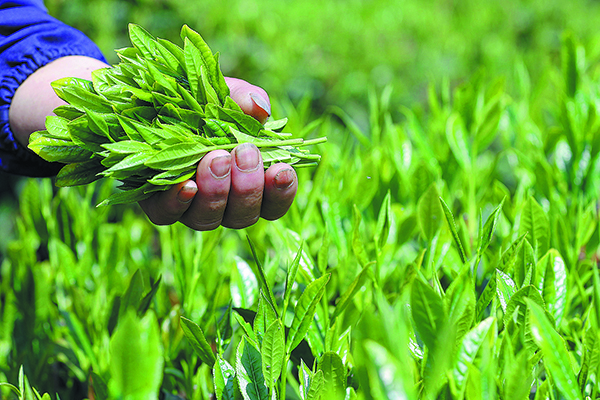

Rich tradition
In November, traditional tea processing techniques and associated social practices in China were inscribed onto the UNESCO Representative List of the Intangible Cultural Heritage of Humanity. The processing techniques of three tea varieties in the Huangshan region, including Kowkui, were added to the list.
Huangshan region, historically known as Huizhou, has been a hub for tea production for centuries. Historical documentation showed tea cultivation began here about 1,800 years ago.
In The Classic of Tea, a Tang Dynasty (618-907) milestone treatise with vivid descriptions on the benefits of tea to body and mind, the popularity of the drink produced in the region was also particularly highlighted.
"The tea culture not only reflects a refined taste in life, it also shows the beauty of craftsmanship and people's creativity," says Zheng Yi, deputy head of Anhui Tea Culture Research Society. "For centuries, the aroma of tea leaves has offered nutrition to this land. This intangible cultural heritage of tea processing techniques is deeply rooted in people's everyday life."
Fang, who is now also the head of the village committee, understands the exceptional status of tea in local culture. It is far more than just a drink.
"For Huizhou people, tea is an emotional bond to connect people," he says. "When you meet relatives and friends or hold key ceremonies or weddings, tea is the best gift. When neighbors have conflicts, drinking tea together is a good way to make a truce and shake hands again.
"People will first exchange their praise for a good cup of tea before talking about business and other key issues," Fang adds. "Sharing love for certain types of tea may reveal shared values toward life. So, in our culture, tea is related to social etiquette.
"And, even judged from a modern scientific point of view, it is a much healthier way to socialize through tea than alcohol," he giggles.
In a region where trade once brought huge prosperity, tea has an even stronger meaning. In Ming (1368-1644) and Qing dynasties, merchants from southern Anhui province used to play a key role on China's economic stage. Together with salt trade and financing, tea also became a pillar product.
In 1984, when the legendary 18th-century Swedish shipwreck Gotheborg was recovered from underwater, most of the 370 metric tons of Chinese tea sealed in its deck was found to be produced in present-day Huangshan.
"Tea is like an ambassador to spread the culture of ancient Huizhou to the rest of world," Wang Chang, another national-level ICH inheritor and a tea processing master from Qimen county, Huangshan, says. "It demonstrates the history of the giant trade network and entrepreneurship of people here."